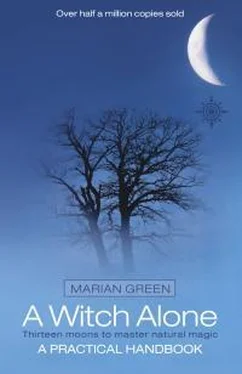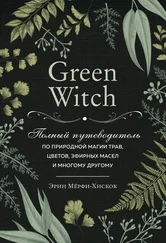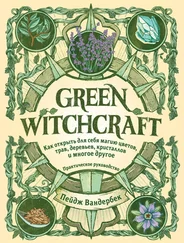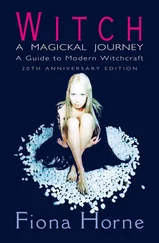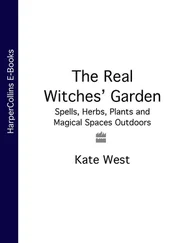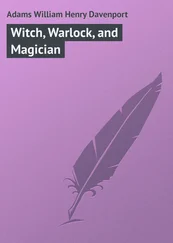The Church’s calendar has Easter at about this time, too. Easter, again named after a Saxon goddess of spring, Eostre, is the only one of the Christian festivals which is decided by the phases of the moon, which is why it moves about. Easter Sunday is the first Sunday after the full moon on or after the Vernal Equinox, which is when the sun enters the sign of Aries. It is the same time as the Jewish Feast of Pesach, or ‘Passing Over’, when a lamb is slaughtered and eaten in haste, with bitter herbs and cups of red wine. Many of the other European countries derive their names for this festival from ‘Pasques’ in French, ‘Pask’ in Dutch or ‘Pasche’ in Latin, most of these being taken to mean ‘Passion’, and relate to the Crucifixion.
Once again the symbols linked with the Easter festival contain many pre-Christian ones. The decorated eggs, found all over Europe, stand in for the rebirth of Nature; the chocolate rabbit is the Goddess’s sacred hare in disguise. The Easter bonnets worn at the Easter Parades represent the new sets of clothes worn for the first time as spring unfurls her golden daffodils, and the tufts of pussy willow fur the branches in the hedges. It is a great time of renewal and new beginnings, when life rises refreshed from its sleep through winter’s dark. As day and night are seen to be equal, at the Equinox, the whole energy of the sun helps the Earth to dress in her new green gown.
The next sacred flower to mark the passage of time to the country folk is the hawthorn, sweet-scented may blossom. ‘Cast not a clout ‘til May be out!’ the grandparents advised us not so long ago. The May in question is not necessarily the month, but the quickthorn used as a hedge plant until mechanised farming grubbed up these old corridors of natural life. The first green leaves of hawthorn used to be eaten as a spring tonic and are rich in vitamins, so vital after a boring winter diet of salted meat, hard cheese and rough bread.
At May Day, the flowering of the hawthorn signals Beltane, the God’s Fire, when the animals were set free from their winter quarters. By may-blooming time there would be more grass, and all the people would be ready to celebrate the advancing warmth and outdoor life. The maypole, a phallic symbol, would be raised on many a village green, and the young children would deck it out with flowers and lace it with ribbons, binding together the fertilising sun power from above with the nourishing earth
power below. Bonfires would smoulder and the cattle would be cleansed of ticks by being driven through a thick medicinal smoke of burning herbs.
The days continue to lengthen until midsummer, when the hay would be harvested, and long hours of work would be needed to weed and hoe all the crops. Sheep would be sheared, usually between May Day and midsummer, and the womenfolk would set about the long task of spinning the wool. To us urban folk, the summer is a holiday, but to workers in the fields it was the time of greatest effort, for it was vital to ensure that the crops produced as much food as possible. Charms and spells and songs would be sung as the farming community slogged their way through all the heavy, boring yet essential tasks. In some places peat would be cut from the sticky, insect-ridden bogs, allowed to dry and carted back to the villages or farm houses.
At last the days of the corn harvest would begin with all sorts of customs, which even in the days of combine harvesters are still carried out as the last run of grain in each field is gathered in. Harvest Suppers, garlanded heavy horses parading the golden sheaves through the villages, dances and songs recall the much simpler days when the arduous work of the year was brought to fruition. Then the corn dollies were made from the finest ears of corn, woven to the local design, bound with red ribbons. John Barleycorn was dead, long live John Barleycorn.
Michaelmas and the Autumnal Equinox bring the garnering of the fruits of wood and orchard, the saving of pumpkins and all root vegetables - the final Harvest Home, when all the produce is displayed in churches or village halls, demonstrating the success or failure of the year’s work. Geese used to be fattened and with their feet dipped in tar and sand to make ‘boots’ for the journey, marched to markets in the towns to grace the supper tables at Michaelmas.
Once all is again gathered in, the flocks sorted out, and the first winter frosts whiten the ground, the old feast of Hallowe’en comes round again. It is traditionally a time of disguises, games of chance and those which foretell the future with apple peel or by candle light, in dark mirrors. The Goddess is seen here in her wisdom aspect, and it is a time of consulting the First Parents, inviting them to the Great Feast, telling them of the births and deaths, hopes and fears of the year, in the times of speech and of silence.
The God’s Story
Within this pattern of harvests and gifts from Mother Nature there runs the story of the God, Son of the Goddess, Great Mother. Born at midwinter, nameless in a lowly place, he grows, each day as a year in his life, until at the hidden feast of Twelfth Night, he becomes a man. In the Old Religion this is the special time, when the young man who stands in for the God at the enactment of the ritual, asks the questions about his heritage, claims his name, his magical tools and receives initiation from his Mother/Grandmother. As he is set free on his own path the Goddess, using her magic of change, becomes the young maiden again.
At the Spring Equinox the God has become the warrior, the Champion of the Goddess, and like such heroes as Hercules or our own King Arthur, he has twelve tasks to perform, each linked with one of the signs of the Zodiac. Dancing around the circle he shows off, in the person of the local hero, or a
lad chosen by lot to play the part. He is armed with the Spear of the Sun and the Arrows of Passion, and when he has played his part, wooed the Goddess and, with her permission, bedded her, he fires arrows into the setting sun and departs on his great journey. This is Lady Day, when the Angel Gabriel came to Mary, Goddess in her own right, announcing her pregnancy, for it is nine moons to Yule.
When the white blossoms of hawthorn foam along the lanes, the God as Hunter, Guardian of Animals, Horned One, seeks his love in the forest, where she, Goddess of Change, is now hiding as a white doe. When he finds her he brings her to the forest clearing, and in the company of the whole community, leaps over the bonfire, wedding in the gypsy way.
The cycle continues; the pregnant Goddess ripens as the corn in the fields swells in the ear. Now the God is the Corn King, swathed in scarlet poppies, symbols so often of sacrifice, and blood upon the fields. Now, as the harvesters sweep across the golden land cutting swathes through the standing grain, the Corn King is ready to lay down his life for the benefit of the people.
Garlanded in cornflowers blue as death, poppies red as blood, and corncockle golden as the setting sun, he who at this festival stands in for the God is cast down and laid on a bier or into a shallow grave in the field. Now his widow/mother mourns over his still form. She knows that the seed he sowed in her lives on, to be the new God in the dark of the year, but now she is all alone. In the North, Wakes Week, in Early August at Lammastide or Lughnassadh, recalls this traditional mourning for the sacrificed God. His spirit lives on and is preserved in the Corn Dollies, woven into traditional patterns, and samples of these are found in ancient Egypt, in Greece and all over the grain-growing lands.
Now the other fruits are gathered in, day and night are equal again, but darkness is winning, and the sun is fading in the sky. It is a time of reflection, gathering in those completed projects, sorting the good from the outworn, choosing the seeds for the new year’s planting, be it crops for the land, ideas for the mind or inspirations of the heart. The flowers fade, but harvests are gathered of magical hazel nuts, instillers of wisdom when they feed the sacred salmon in his mysterious pool.
Читать дальше
Конец ознакомительного отрывка
Купить книгу
